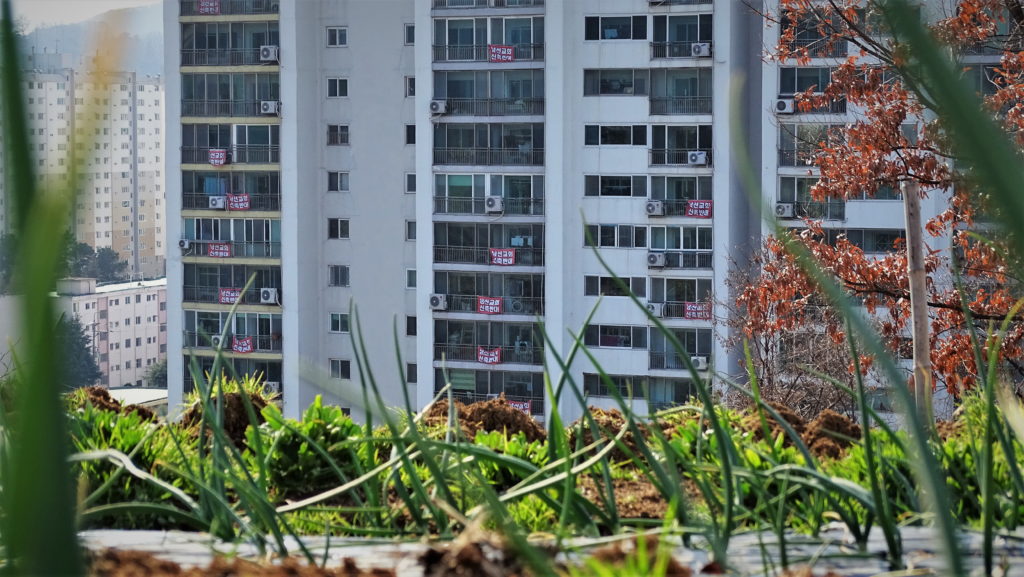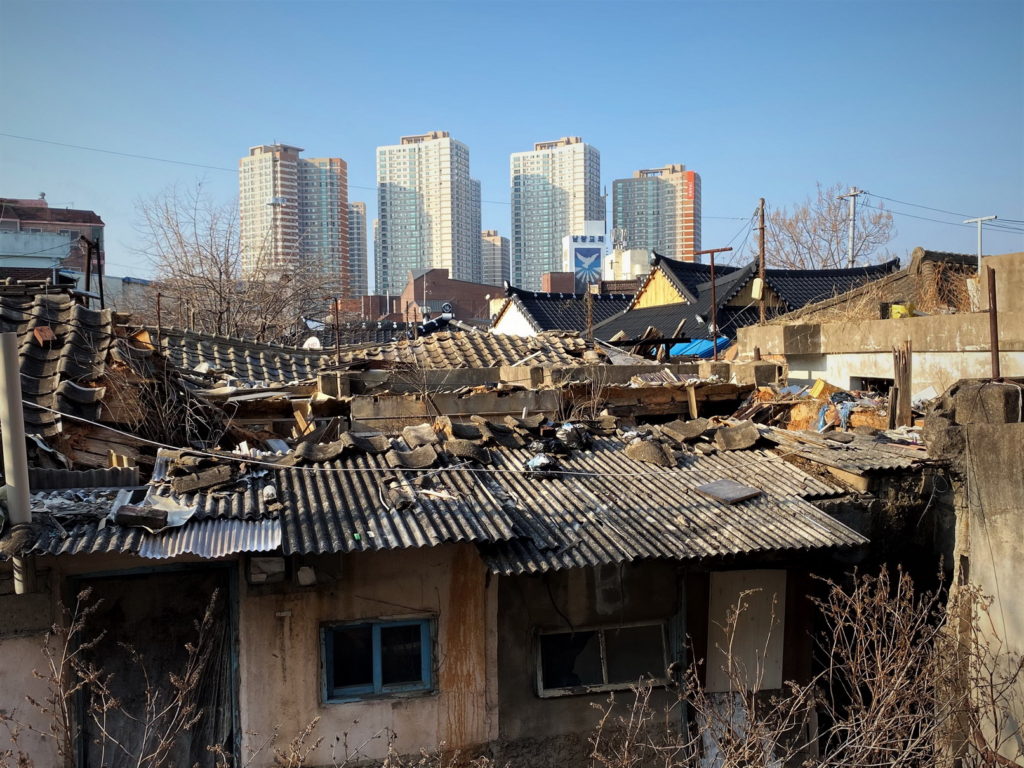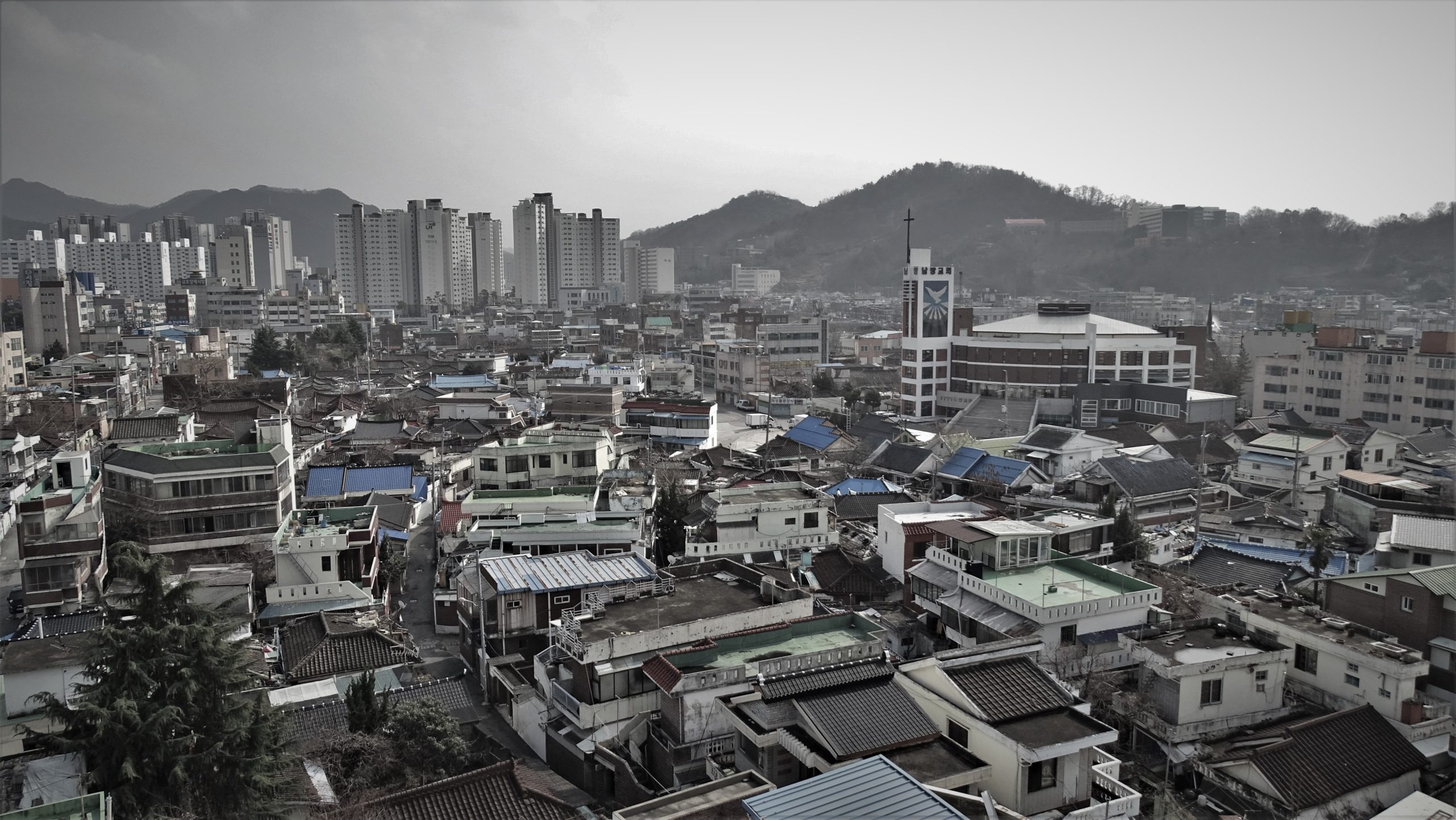Evicting God: The Exodus of Hak-dong’s Condemned Churches
Written and photographed by Isaiah Winters.
Evictions and buyouts for the sake of redevelopment are all the rage these days. Hak-dong is the latest neighborhood to get the boot on behalf of real estate developers and their towering new apartments. All that stands in their way is a dense network of shabby, low-rise homes that offends the present with its allusions to the past – a past they can’t seem to pave over fast enough.
Take one look at a map and you’ll understand why developers want Hak-dong leveled. The neighborhood sits on primo land conveniently triangulated between Namgwangju Market, Chosun University, and the Gwangju Stream. What’s more, the redevelopment zone runs parallel to the city’s only subway line, with one stop conveniently located at each end. Once the new lines are completed, the junction at Namgwangju Station will only further boost the area’s accessibility.
Nearly the entire area parallel to the Gwangju Stream has already been evicted, save for a dwindling batch of holdouts: a run-down dry cleaner, a post-prime karaoke bar, and a waning pulse of seniors who shuffle by the trash heaps and vacant windows without saying a word. The neighborhood’s only remaining hub of social capital appears to be Namgwang Church, which practices some denomination of Presbyterianism.

Visit condemned neighborhoods enough and you’ll notice that churches like this are often the most tenacious holdouts. Following their inevitable eviction and demolition, however, an intriguing question is where these deeply embedded churches go after they die, so to speak. It’s something I’ve always wondered but never looked into – that is, until the issue stared me in the face not too long ago.
Recently, while ambling through an abandoned hillside farmstead in Nam-gu, I caught sight of vivid banners strung up along the Bangrim Tunnel Intersection. Like renegade semaphores, the banners blazoned the message “We Absolutely Oppose Namseon Church’s Construction!” Instantly curious, I used my best “Google-fu” to find out more about this incoming church and its backstory.
Long story short, the Seventh-day Adventists of Namseon Church used to convene in the northernmost part of Hak-dong’s redevelopment zone before it was razed in 2015 and turned into the soaring, upscale apartment complex seen there today. After losing its house of worship in Hak-dong, Namseon Church began an exodus of sorts in search of a new promised land – a search that remarkably continues to this day.
Based on what I could find, in 2016, Namseon Church attempted to buy land in Unrim-dong along the busy valley entrance to Mudeung National Park. Unfortunately, relations with the local community quickly began to sour.
According to a plea letter issued by residents of Unrim-dong, they were upset that the church had significantly underreported the size of its congregation and the amount of traffic it would bring to the narrow valley. Facing ardent resistance, Namseon Church was turned out once again and has since continued to wander through the urban wilderness in search of another home.
That’s where the protest banners in Bangrim-dong come into play. Residents there have taken an emphatic stance against Namseon Church’s proposed construction in a hilly, forested part of their neighborhood that they’d rather see turned into a public park. Usually, hanging up a few roadside banners is about as far as public protests go, but to my surprise, at least twenty-five nearby apartments were also flying similar banners from their veranda railings. An official opposition rally was held in Bangrim-dong on Thursday, February 13 – the day before I stumbled upon the area. Local opposition is rather eclectic, including two of Bangrim 2-dong’s local residents’ committees and a voluntary crime prevention group.

A view of local protest banners from the perspective of Bangrim-dong’s renegade farmers.
Also against the new project is the Saemaeul Council and Saemaeul Women’s Society, in addition to residents of both the Geumho Mansion and Gwangshin Progress apartment complexes, who’ve festooned their blocks with protest banners. There are likely many more nearby residents who similarly oppose the new construction, though as individuals.
Further opposition to the church’s construction comes from a group of rogue terrace farmers who sidestep the hills’ “No Farming” signage and till the land at their leisure. The terraces are impressively maintained and ring the hills from top to bottom like giant steps.
In one area, the hillside is notched with as many as ten such terraces, each either meticulously cultivated or purposely left fallow. In all likelihood, these farmers will eventually get the short end of the stick: A new, manicured park would likely crowd them out, while a new church would likely make parking lots of it all.
It’s unclear who’s going to make the next move in this stalemate. As it stands, the abandoned farmstead has been gutted and some of the nearby bamboo thickets cleared – preludes to the church’s construction. Meanwhile, protest banners continue to fly and rogue farmers continue to farm. The tense standoff in this sleepy little corner of Gwangju is just one of the many overlooked ripple effects of redevelopment.

The contrast between old and new is starker in Hak-dong than just about anywhere else in the city.
What’s for certain is that the remaining redevelopment zone in Hak-dong will come crashing down so that unaffordable housing can go up. With it goes Namgwang Church – that last pulse of civic life in the condemned area. Maybe its followers will get lucky and set up a new house of worship somewhere else with little to no resistance. Or maybe – like Namseon Church – they’ll begin a prolonged exodus all their own.
THE AUTHOR
Originally from Southern California, Isaiah Winters is a Gwangju-based urban explorer who enjoys writing about the City of Light’s lesser-known quarters. When he’s not roaming the streets and writing about his experiences, he’s usually working or fulfilling his duties as the Gwangju News’ heavily caffeinated chief proofreader.





